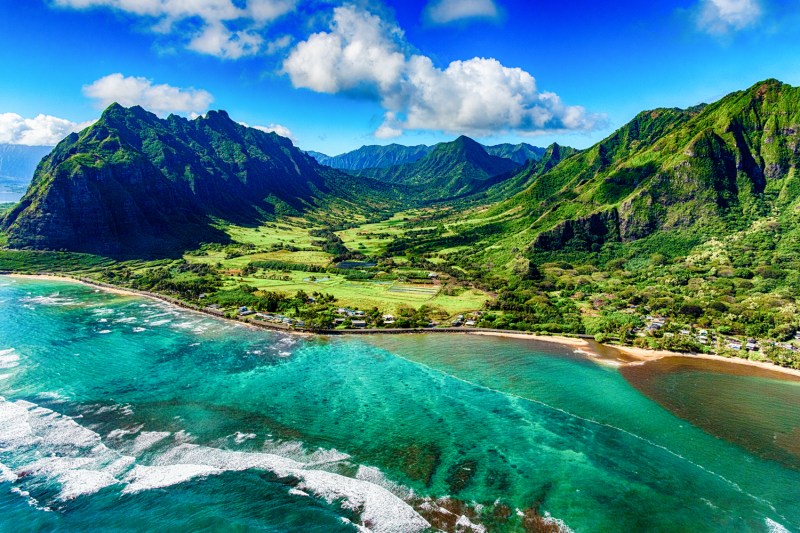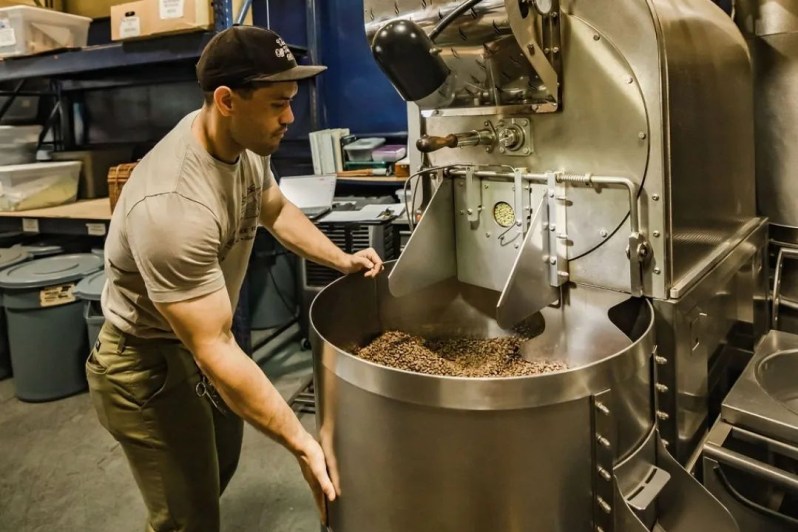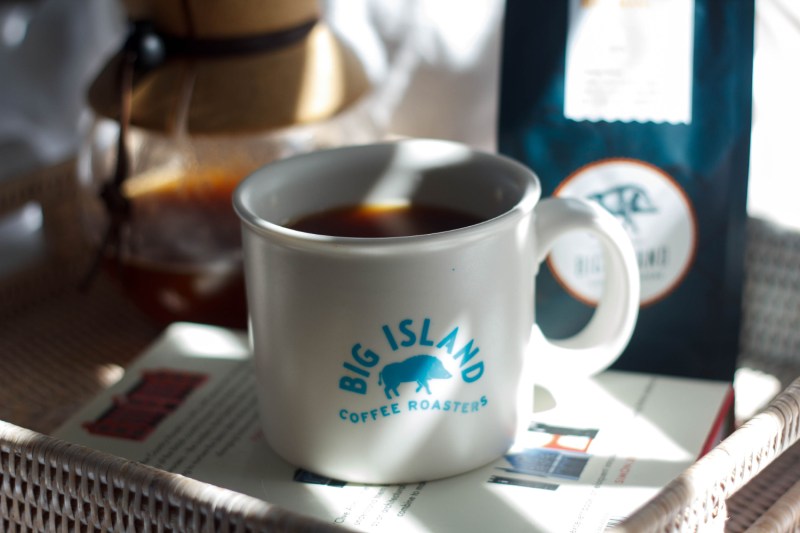There’s nowhere like Hawaii. That goes for everything from unbelievable National Parks and coastlines to culture, traditional and modern cuisine, and drinks. Coffee enthusiasts revere the archipelago, the only place in the U.S. where world-renowned coffee is grown and roasted. Most of us have heard of Kona coffee. The drier, western side of the Big Island is responsible for some truly special beans, yielding impossibly smooth coffee. But Hawaiian coffee comes from many regions, as the crop thrives throughout the islands, offering different styles and tastes in America’s only coffee-growing area.

Thanks to favorable climates, incredible soil, a push for sustainability, and related tourism, Hawaiian coffee is arguably in its best form yet. When people talk about the best coffee on the planet, the Rainbow State is often mentioned, and for good reason. We talked to a few Kona coffee purveyors to get a better sense of what’s happening across the Pacific.
The Kona effect
Kelleigh Stewart is the CEO and founder of Big Island Coffee Roasters. She says genuine 100% Kona coffee is lauded for its rarity, smooth and sweet flavor, and relative freshness. “The most commonly grown variety in the Kona region is Typica, which is a smooth, chocolatey, nutty, and floral coffee with light fruit notes,” Stewart says.
There are imposters, for sure, as is often the case with lauded regions (wine has a long history of this). “Those who use the Kona name falsely are often purchased by tourists looking for a souvenir to take home,” Stewart says. “They want to be the cheapest bag on the shelf, meaning they have to flavor it with gimmicky flavors and blend it with non-Hawaiian coffees. We don’t blend, nor do we flavor. We also list the roast day on the bag.”
Part of the appeal is the delicate nature with which the beans are handled. It’s more expensive, sure, but it also preserves quality. “Kona coffees are hand-harvested because the Big Island has five volcanoes on it and the terrain is too rocky for mechanical harvesters,” Stewart says. She adds that everyone in the supply chain earns a living wage that exceeds Fair Trade standards.
There’s diversity as well, with hundreds of small farms operating on the Big Island, each carving out their own bit of the Big Island coffee identity. And then there’s the freshness factor. “Most coffees travel for weeks, if not months, on barges to get to a roaster,” Stewart adds. “But Kona coffees are typically milled, roasted, and sold near the place they were grown.”
Beyond Kona

Nicky “Beans” Matichyn is the owner of Maui Coffee Roasters. The company started back in 1982 and grows coffee on multiple islands. “The Hawaiian Islands are known for its many micro climates,” Matichyn says. “As a result, there is a variety of flavors that come from both Hawaii Island and Maui Island. No matter where the coffee is grown you can be assured of specialty coffee quality.”
He notes that Maui in particular has fared well lately, having won awards at prestigious cupping competitions. In addition to Kona, coffee is grown in Ka’u, Puna, Hamakua, Kauai, Maui, Molokai, and Oahu, according to Matichyn. The flavors differ depending on where you go. Stewart says the coffees from Kauai and Maui tend to be a bit milder and that one of the most exciting spots for coffee is also one of the quietest. “From a quality or innovation point of view, the Ka’u region of the Big Island excels in diverse varieties and small-holder farms using innovative practices to push quality and flavor to the next level,” Stewart says.
Sustainability
“For Hawaii, sustainability has always been important and it isn’t just about using compostable or recyclable materials,” Stewart says. “It’s also about protecting our native forests and the sacred culture, practices, and food systems of the Hawaiian people.”
She says Big Island Coffee Roasters uses 100% renewable electrical energy. The brand now has fully compostable single-serve Kona coffees, something local resorts have taken a liking to. While a bit more of the coffee carbon footprint occurs on the consumption side (watch your energy use when making that cup and know where your dairy or other inputs are coming from, people) compared to the production side, it’s still a significant approach.
Meanwhile, Maui Coffee Roasters uses Loring™ roasters, which are far more environmentally-friendly as they emit substantially less while consuming less fuel. At large, sustainability has always mostly been engrained in the Hawaiian way. Locals love the land and wish for it to stay that way. Tourists, looking for more transparent brands with genuine commitments to the environment, have followed suit, seeking out the brands on a mission.
Agritourism
The coffee farm tour has long been an attraction in Hawaii and its popularity is greater than ever. Thanks to a collective heightened food culture, we’re eager to know to only where our edibles are grown, but how they come to be. Touring these farms gives visitors a better sense of what’s in their cup while offering an economic mainline to the industry, whether it’s a roasting outfit or small, family-owned farm.
Big Island is set to open its flagship retail location in Hilo this summer, one where visitors can both taste and witness the production process. They’ll also be offering immersive tasting tours showcasing some of the different growing areas.
How to enjoy Hawaiian coffee

When it comes to enjoying that cup of Hawaiian coffee, there are some things you should do. After all, you wouldn’t drink Champagne out of a Dixie cup, would you? Stewart says there are some basics you should have in order. First, look for freshness and aim to consume the beans within three-to-four weeks of the roasting date.
Next, use a proper burr grinder. “Think of your coffee like an apple,” Stewart says. “Slicing an apple two weeks before eating it changes the flavor, texture, and liveliness due to oxidation and enzymatic degradation. Similarly, coffee loses aromatics and richness when it is pre-ground.”
Lastly, use clean water (Stewart suggests filtered with a neutral pH), rinse out your filter before brewing, and store your beans in a cool, dark, and airtight environment. What else? Exhale and focus on the quality. “Savor it. Don’t drink it on the run. Don’t drink it in a paper cup,” Matichyn advises. “Relax, sit down, and enjoy the moment.”
Editors' Recommendations
- These 4th of July vodka drink recipes from Tina’s Vodka are just plain great
- Nestlé’s environment-friendly initiatives will make you feel good about your daily cup of coffee
- It’s time to learn how to use a French press coffee maker
- Should you drink coffee while intermittent fasting? We have the answers
- The very best canned coffee to crack in the a.m.



